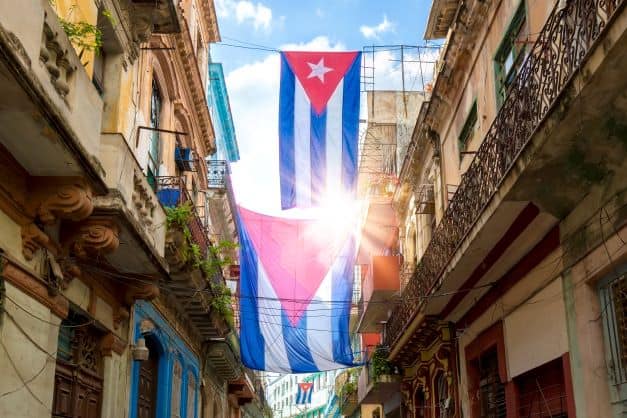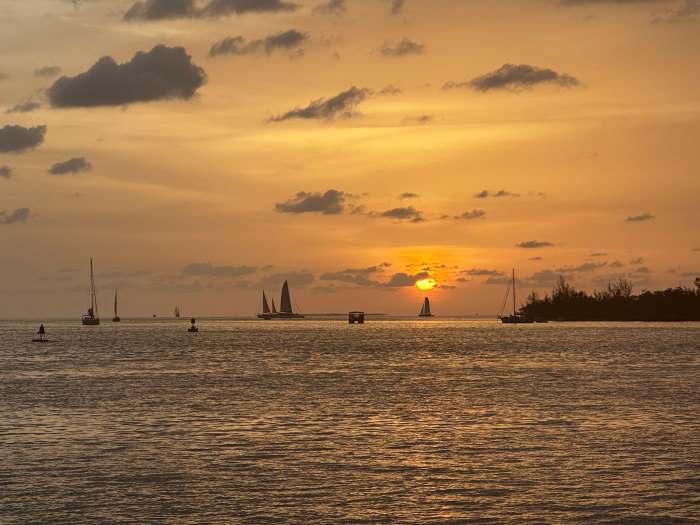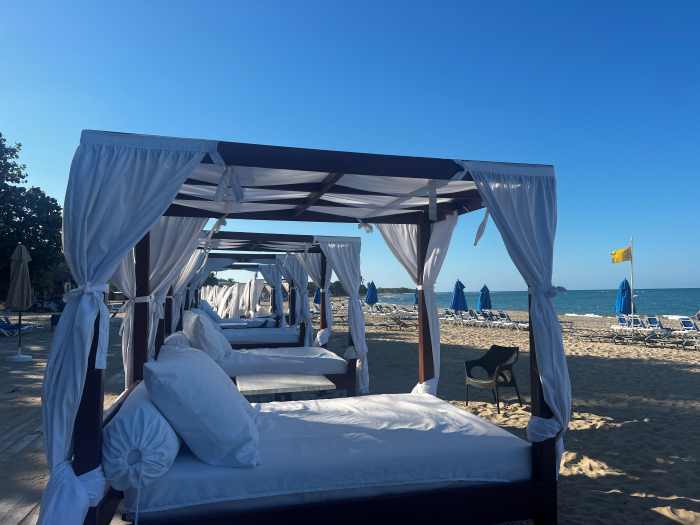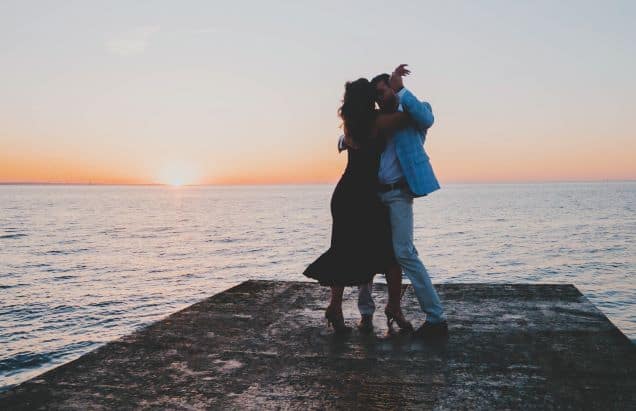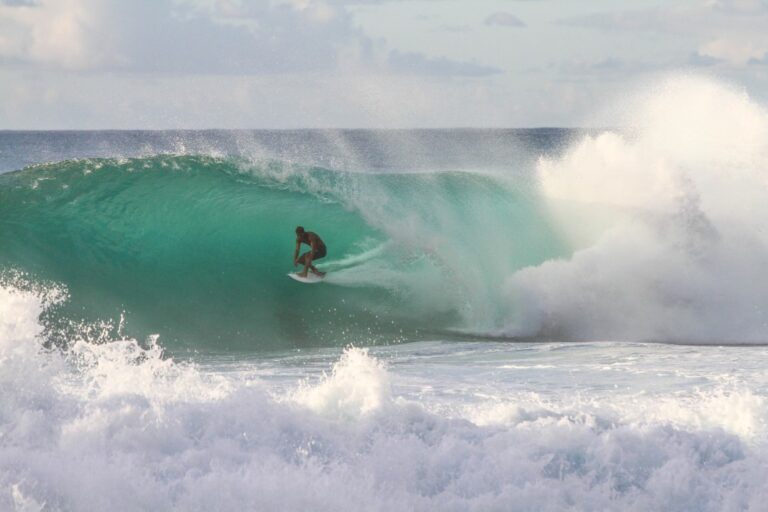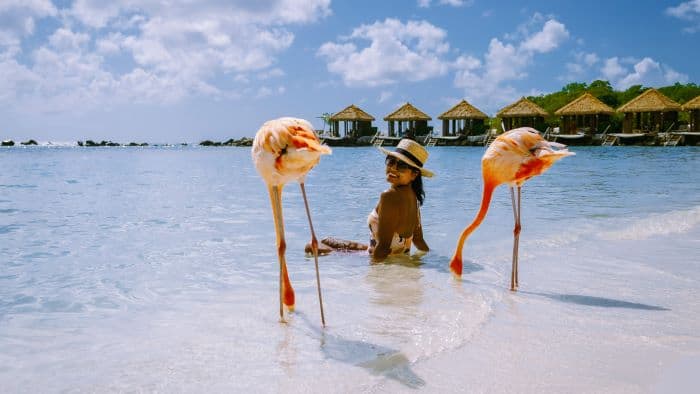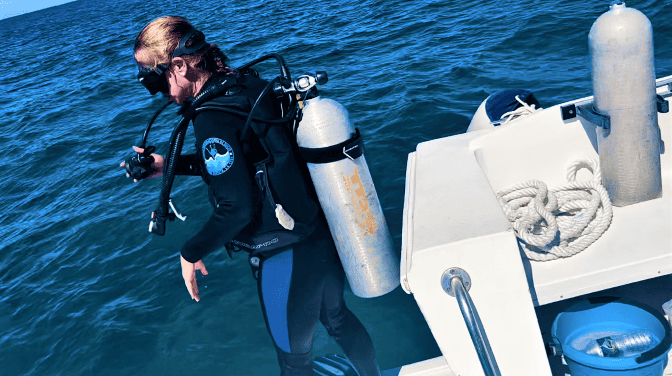Surprising & Interesting Facts About Cuba From A Local (2024)!
When someone says «Cuba,» I`m willing to bet a whole lot that you immediately envision pastel-colored American cars, beautiful (but run-down) houses, colorful art, and fancy cocktails.
I did not know half of these things when I arrived for the first time. Now, I have traveled to Cuba regularly for over five years, staying for long periods of time, and I am learning a little more every time I visit.
Cuba has lots of national parks, UNESCO World Heritage Sites, its own very unique religion, and many other intriguing things. There are quite a few interesting facts about this island outside of the stereotype.
Did you know that Cubans are not allowed to board boats? I don’t know if we can call that a “fun fact,” but it definitely is an interesting one.

An Introduction To The Islands Of Cuba
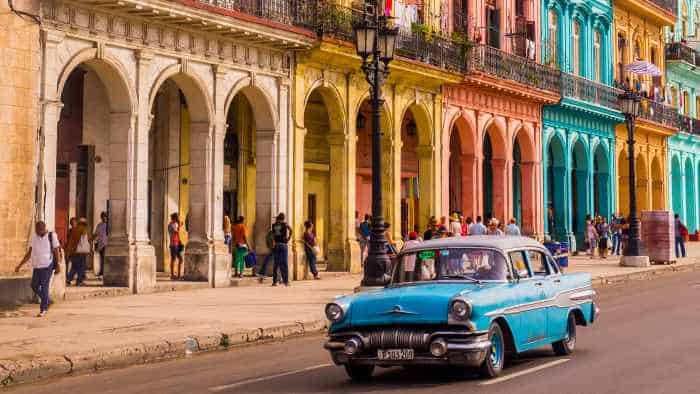
Yes, you can say islands, as the island nation of Cuba is actually an archipelago.
Havana, or La Habana in Spanish, is Cuba’s capital and biggest city, and Santiago de Cuba is its second biggest city.
Havana’s colonial-style architecture, particular buildings, and historical landmarks make for an impressive and beautiful skyline.
Also read: 11 Iconic Cuba Landmarks From A Local: Journey Through Time And History!
9 Interesting Facts About Cuba That Probably Will Surprise You!
- The main island of Cuba is the largest island in the Caribbean
- Cuba’s coastline stretches for over 3500 miles
- The most popular sport in Cuba is baseball
- Cuba’s most common religion is the Afro-Cuban Santeria, and witchcraft (brujeria) is a completely normal part of it
- Cubans need a special permit to board a boat – any boat – in Cuba
- The Cuban currency CUP is illegal to bring outside of Cuba
- Cuba’s three biggest exports are tobacco, sugar, and nickel
- Cuba has 9 UNESCO World Heritage Sites
- Around 20% of the population in Cuba lives in the capital, Havana, around 2,1 million people out of a total of 11 million.
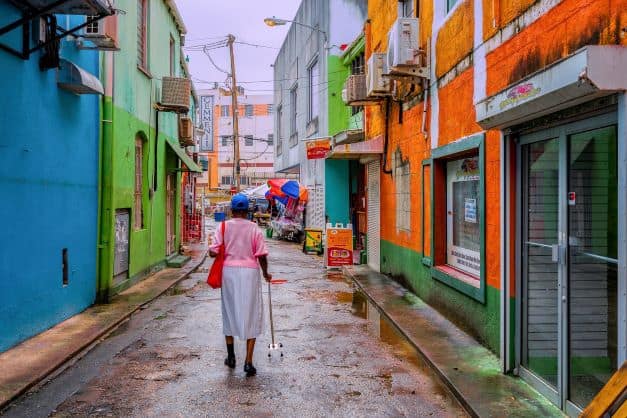
The old city of Havana was declared a UNESCO World Heritage Site in 1982. The city is famous for its 500 years long diverse colonial history and cultural heritage, as well as recent history.
Out of the population of around 11 million, just over two million live in Havana.
The second-largest city is Santiago de Cuba, situated on the southeastern tip of the main island, very close to the infamous place Guantanamo you probably have heard about.
Why You Should Visit Cuba!
Few nations across the world have the same aura and mystic ring to them as Cuba.
Apart from the interesting facts about Cuba, I also have lots of information and humble advice on how to survive, thrive, and fall in love with Cuba when you visit.
The no-brainer motivation for traveling to Cuba is the Caribbean climate, the sun, the sea, and the truly gorgeous beaches.
For anyone looking for a relaxing holiday, there are plenty of destinations on this island that will serve you everything you want if you need to relax and recuperate.
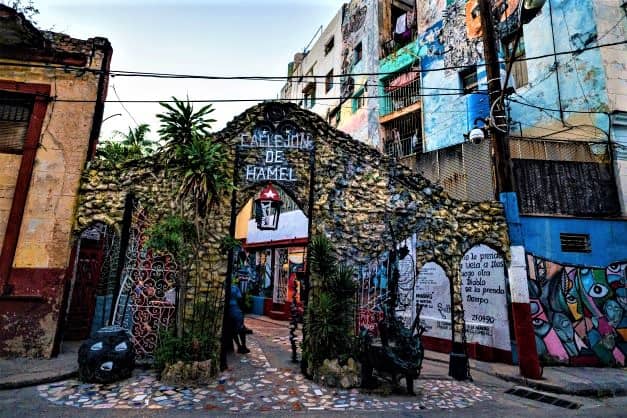
If you prefer (or also like) the buzzing nightlife, there is no place quite like Havana for that. Do you know how many UNESCO World Heritage sites are in Cuba?
This little island nation actually has 9 UNESCO sites on the official list. You find remnants of the 500-year history pretty much everywhere you go in the Cuban cities.
Even if history is not a passion of yours, it is impossible not to be impressed and in awe when the elegant but scruffy beauty is on your face everywhere.
Best Way To Travel In Cuba
If you want to make the most of your Cuba vacation, a little planning is very smart to find out what is the best way to travel to Cuba for you.
If you want to visit more than just one destination (which you should), a road trip around parts of the country is a good option.
You have these options to travel in Cuba:
- Viazul bus
- Taxi colectivo
- Taxi privado
- Book private transfers online
- Organized tours that often include an itinerary
Most taxi drivers will be open to negotiating a price if you give them a business opportunity, like being a designated driver for a few days.
They also are going to ask you to pay in Euros in cash.
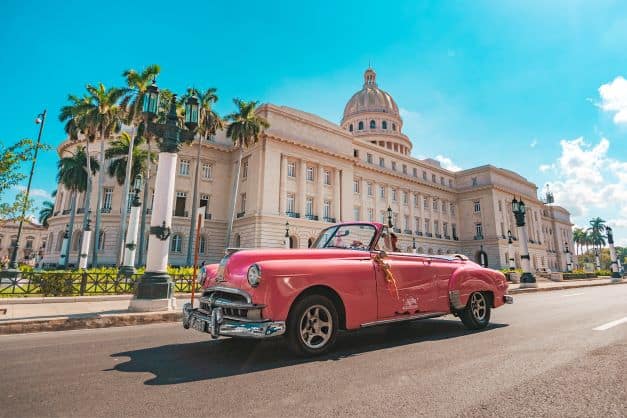
Take your time, and don`t rush it when you visit Cuba. Go for walks and take in the atmosphere.
The Cuban art, music, and dance scene is unique; inside and out, day and night it does not matter. You will encounter bands of troubadours in the streets during the daytime, and people will suddenly dance for no reason.
Visit the museums, showing off the interesting facts of Cuban history from a Cuban perspective.
Like the history of the failed US invasion of the Bay of Pigs at Playa Giron 1961, the Museum of the Revolution, or any of the many cultural show-off locations across the country.
In the evening, the music leaks out from about every door, bar, or restaurant. Cubans don’t live for long without music; it is everywhere all the time.
This can be a bit unnerving for a cool and calm Scandinavian, but secretly I love it. The warm ambiance is magical.
What Is The Weather Like In Cuba?
Cuba has a warm and humid Caribbean climate all year, typical for the region, which can be divided into two seasons, the wet and the dry season.
The wet season, also known as the hurricane season runs from around May through October. In this period, you have to expect the occasional tropical storm, as well as frequent afternoon showers.
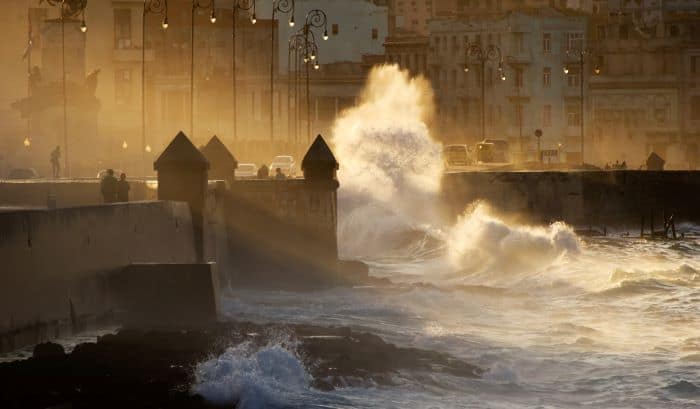
It is super hot and humid, and the humidity and temperatures can seem excruciating if you are an active and exploring tourist.
During the dry season, running from November through April, there are not a lot of summer thunder and rain showers, and the temperature is generally lower.
During this period, you may be very alone on the beaches as the Cubans find the winter months too cold for beach life, but the nightlife is not affected.
Average temperatures in Cuba range from 22 °C (72 °F) in January and February to 28 °C (82 °F) in August. Rainfall is heaviest in June and October and lightest from December through April.
What Is The Best Month To Visit Cuba?
The best month to go to Cuba for you will depend on what you prefer.
The peak tourist season in Cuba runs roughly from mid-December to mid-March, as well as all of July and August, despite the challenges of the wet season.
Prices are also highest when the crowds are thickest, which is in the summer, which is also the holiday season for Cubans as well.
If you like the heat and do not mind crowds of other tourists, the summer season is great for you.
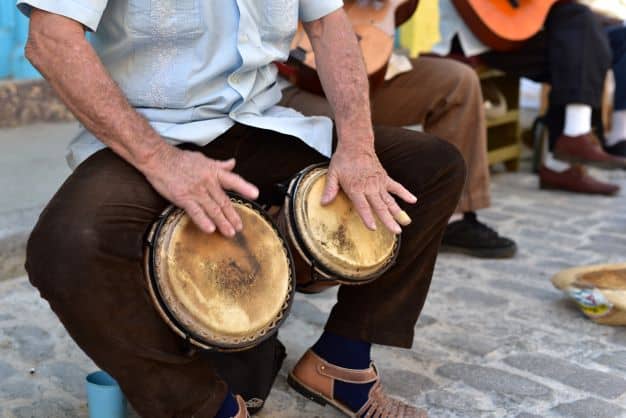
If, on the other hand, you prefer less crowded streets and sights, if you prefer to travel at lower costs and do not mind the cooler air (and some rain showers), the middle seasons might suit you better.
This would be something like March through to May and late August to October.
If you ask my opinion as an ex-pat, I prefer the late spring and early fall in Cuba.
The temperatures are nice but not sizzling, and there are tourists and life, but not millions. The beaches, sights, hotels, and everything Cuba has to offer are still there all year round.
Why Is Cuban Spanish So Hard To Understand?
The official language in Cuba is Spanish, but I need to warn you; Cuban Spanish is nothing like any other Spanish.
Cuban Spanish is so particular with its accent, slang, and pronunciation (and speed!) that it is a lot more like a language of its own. Cuban Spanish is hard to understand!
If you already speak Spanish, you will find out it still can be TOUGH to follow a conversation between Cubans.
If not, here is why you should spend some time and energy learning the language. You can also start your Spanish journey by learning the basics in Havana!
Cuban Currency 101
From the 1st of January 2021, the only valid currency in Cuba is ONLY the CUP, the Cuban Peso, after the change of the national monetary system.
The Cuban peso to the dollar is 24:1, so one dollar is worth about 24 Cuban pesos in the bank. The price, or value, on the streets varies a lot.
ATMs are easily available in Cuban cities for everyone except those with American credit cards.
Due to the still-active sanctions from the US, Americans still can not withdraw or use their credit cards in Cuba.
Note that from ATMs you are only able to withdraw Cuban pesos, no other currency is available once in Cuba.
Since January 2021 there has also been an inflation of the Cuban peso, which has influenced the prices of groceries, foods, and commodities. Prices on some items have increased on average by around 400 percent.
I recommend you bring Euro in cash in to spend in the shops, restaurants, and outlets around the country.
Cuban Food
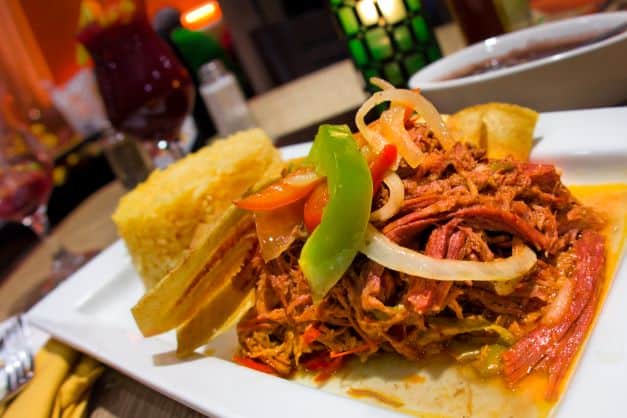
Cubans are serious about their food, especially dinner (comida). Trying to serve dinner in the evening without rice will make people think you are deficient in some way, and you will certainly not make friends. So be aware!
Make sure to try Cuban cuisine from a local paladar, traditional Cuban meals with rice, black beans, and chicken, or ropa vieja, which is pretty much available anywhere.
You can also get whatever fine dining you prefer in one of the super high-end restaurants or bars now available in Cuban cities.
Traditional Cuban cuisine will consist of a lot of chicken, white or black rice, black beans, and vegetables. And of course the ropa vieja.
Also, the yukka plant and fried plantains (a type of banana) are common and popular. I had never even heard about Yukka before I visited Cuba for the first time; not really a common part of Scandinavian cuisine.

Cuba has had a questionable reputation for limited food options for tourists, before visiting I had heard that the food is tasteless and bland and advised you to bring your own seasoning for your holiday.
My experience in recent years is that this is no longer the case. You normally will find anything the heart desires to eat, at least in Havana, the bigger cities, and the bigger hotels & resorts.
One thing that Cubans do not survive without is salt in their food, but meals are generally not very spicy compared to Indian or Asian food.
However, most shops selling vegetables and fruit also have a variety of spices for sale so don`t worry.
When browsing through the menus in a Cuban restaurant, you should rather ask “Do you have”, instead of “I would like”, as many options are simply not available to well-wishing restaurant owners.
Also, most Casas particulares provide a super breakfast for around five dollars/Euros, with toast, ham and cheese, eggs, fruits, juices, and coffee.
Best Places In Cuba To Visit
There are so many beautiful and interesting destinations in Cuba that it is hard to recommend what to choose when you are only visiting for a week or two.
The two most famous destinations are Havana and Resort Heaven Varadero on the northern coast.
Sizzling Havana Cuba
Havana offers you everything: history, culture, art, great food experiences, city vibe, recreation, dance, and nightlife. Whatever you like to experience on a holiday, Havana has something for you.
Like my mom said when she left after her first visit: «This has been a journey of formation», after meeting the country and the people she had heard so much about.
Read more about Havana:
- Easy Havana Tour Guide: 8 Best Havana Tours By A Local
- Best Restaurants In Havana | Ultimate Dining Guide From A Local
- Ultimate Havana Nightlife Guide From A Local
- 11 Awesome Day Trips From Havana Cuba By A Local
- 7 Bars Havana: Ultimate Rooftop Bar Guide Havana By A Local
- Where To Stay In Havana From A Local (Hotels, Neighborhoods & Areas)
Varadero
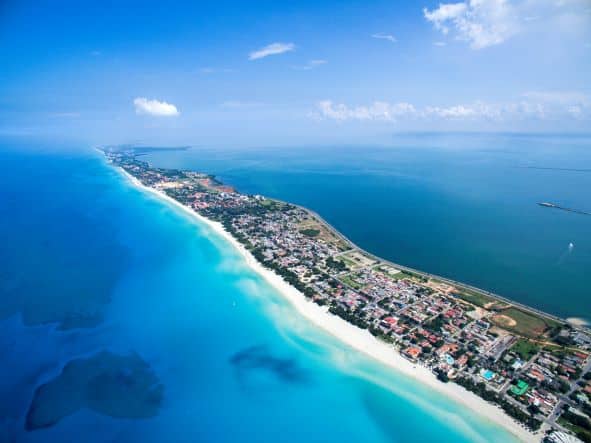
About a two-hour drive to the east of Havana lies the sandy peninsula Varadero, which is home to loads of hotels, beaches, and water sports options.
Many people take their vacation to Varadero, which is actually the largest resort area in the Caribbean! From Varadero, you can easily visit other destinations, like Havana, Trinidad, and Cienfuegos.
And you really should make sure you have the option to travel to a few other destinations because although it is a Caribbean oasis, staying in Varadero the entire time is almost like not visiting Cuba at all.
This all-inclusive hotel world is a bubble where nothing looks like the rest of the country.
Go to Varadero to chill, recuperate, and enjoy the sand and sun for a while. Then go on to explore the real Cuba: the cities, the streets, the people, and the culture.
More about Varadero:
- What Is Varadero Known For? 10 Things You Need To Know Before Traveling
- Best All Inclusive Resorts In Varadero From A Frequent Visitor
- 19 Best Things To Do In Varadero From A Frequent Visitor
Viñales Valley

The beautiful farmlands in Vinales Valley are where a large production of sugar, tobacco, and rum is produced.
Many farmers open their facilities to tourists, showing off how everything is done, making it all an adventure for you to experience the whole process.
Cuban farmers are also currently allowed by law to sell a small percentage of their products to tourists and not just to the state.
While in Vinales, you should also get adventurous and join a horseback riding day, often including extracting sugar from canes, smoking hand-rolled cigars, and testing out local cocktails based on short-traveled rum.
You can visit Vinales for a couple of days and see how they do it. Then buy a cigar the farmer just rolled with his own hands while curious farm animals noisily stroll around you.
More about Vinales:
- 15 Best Things To Do In Vinales From A Cuba Expert
- 7 Amazing Casa Particulares Vinales Valley Cuba
- Three Ways To Travel From Havana To Vinales (And One To Avoid)
Trinidad
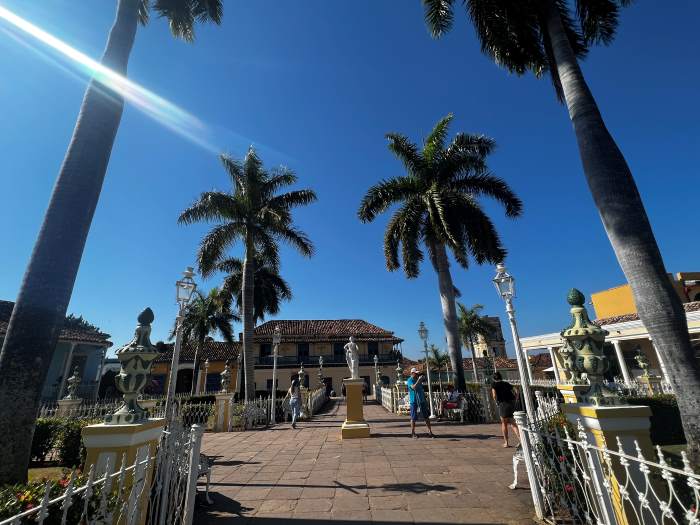
The Unesco-listed city of Trinidad lies on the southern coastline of the main Cuban island. You can take a taxi or bus from Havana to Trinidad, but it is a little too long for a day trip.
In Trinidad, the architecture is particularly beautiful, with low, well-preserved colonial colorful houses like pearls on a necklace along cobblestone streets. Make sure you have at least an entire day to explore, including an evening to walk the night streets.
Enjoy the ambiance of the city; there will be music everywhere, nice restaurants and little bars, and lots of people all around.
Also, try to visit the museum showing off the Cuban victory after the failed invasion of the Bay of Pigs at Playa Giron in 1961.
The bay is most famous for the US invasion attempt, and along the bay are beautiful beaches and places to do water sports. Most famous is the Playa Giron, where the US troops got stuck after the attempted invasion.
More about Trinidad:
- Is Trinidad Cuba Worth Visiting | A Remarkable Colonial Sugar Kingdom
- 19+ Unique Things To Do In Trinidad Cuba From An Expert
- 4 Best Casa Particular Trinidad Cuba By A Local
Cienfuegos
Cienfuegos is known as the “Pearl of the South of Cuba.”
This city has seduced travelers from all over the world, who come to experience the mixture of its cultivated French spirit and its affable Caribbean style.
The city was founded in 1819 by a French emigrant, Don Luis D’Clouet. It is full of classical facades and slender columns, giving an atmosphere reminiscent of 19th-century France.
More about Cienfuegos:
- 12 Best Things To Do In Cienfuegos Cuba By A Local
- 9 Best Casa Particulares Cienfuegos Cuba From An Expert
Santiago de Cuba
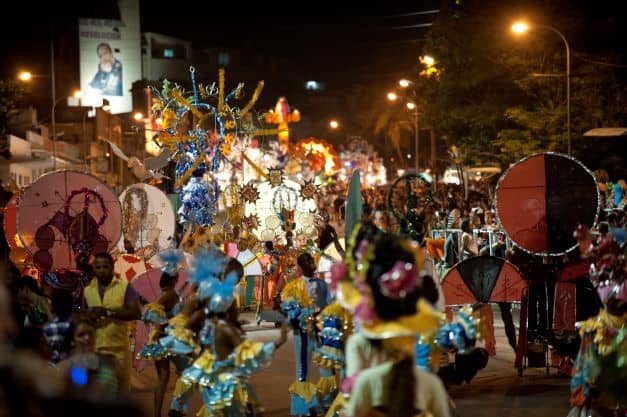
Santiago de Cuba is the second-largest city in Cuba, all the way to the East of the island. It is called the cultural capital of Cuba and is well-known for
From Santiago de Cuba, the distance to Havana is bigger than that of the Dominican Republic and Haiti. This has shaped the identity of the city, which is heavily influenced by Afro-Caribbean details.
This is also where Fidel Castro is buried, along with a lot of other important personalities in Cuba, resting at the xxx Semetary.
More about Santiago de Cuba:
- 30+ Brilliant Things To Do In Santiago De Cuba
- 6 Best Casa Particulares Santiago De Cuba From An Expert
The Cuban Keys
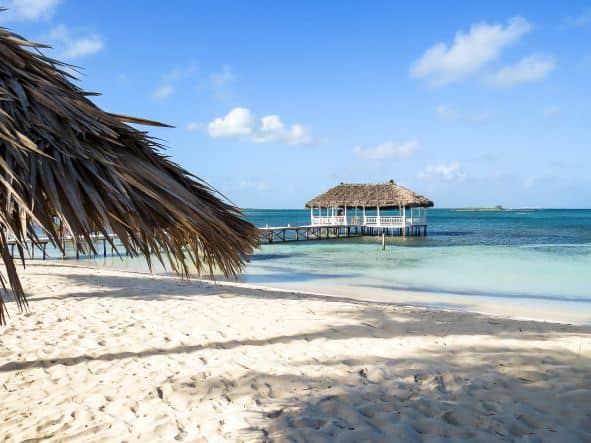
The Cuban Keys, Los Cayos, is the term used for all the islands off the shore of the main island.
There are, in total, more than 4000 keys around the main island, although some are more well-known than others. A very popular area for vacations is the Keys off the northern coast, to the east of Cuba.
Places like Cayo Coco, Cayo Guillermo, and Cayo Cruz are islands dominated by tourism.
Here you can spend your whole holiday in large resorts with azul pools and white beaches if you want, but then, of course, you have not really visited Cuba.
More about the Cuban Keys:
- A Locals Guide: Travel To Cayo Santa Maria Cuba
- 3 Best Cayo Santa Maria Cuba All Inclusive Resorts From An Expert
- Dreamy Cuba Holidays Cayo Coco Island From An Expert!
Isla de la Juventud
Isla de la Juventud, the Island of Youth, is the second-largest island in the Cuban archipelago, South of the western part of the main island.
It is described by Tripadvisor as “a pristine and unhurried island with Indian cave paintings to view, great diving opportunities, and friendly local wildlife”. The charming island has rather few visitors.
Mostly it attracts divers because of its beautiful coral reefs and colorful fish, but they also are paradisiac beaches with crystal clear waters, which makes it one of the best places in the world for beach tourism.
In the capital, Nueva Gerona, you can walk along its charming streets and get to know the culture at the Natural History Museum or the El Abra State Museum.
How To Fly To Cuba From The US
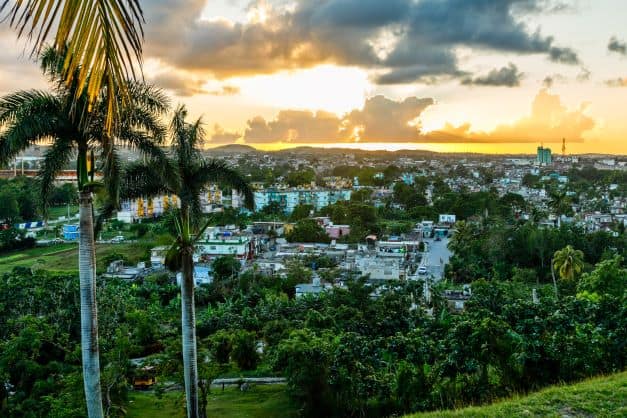
You don’t need to worry about how to fly to Cuba from the US; American Airlines has daily flights to Cuba from Miami.
You can also buy the pink US tourist card right there at the counter before you board the plane at Miami Airport if you have not bought one online in advance.
The crew at Miami airport is used to people traveling to Cuba. In other American airports, that may not be the case.
As there are specific travel regulations for Americans traveling to Cuba, make sure you have enough time at the airport if you are flying from any other US airport to allow for any extra checks.
I have only had problems traveling to Cuba one time, when I traveled from Memphis, TS. The check-in crew was not familiar with the Cuban tourist card or entry approval and was genuinely shocked that I was traveling there.
I actually lost my flight before they finally concluded that I, indeed, could travel to Cuba (which I knew).
Flying to Cuba From Canada

Canadians have no issues traveling to Cuba and can also get a tourist visa valid for three months instead of two.
Many Canadian travelers visit Cuba, and Canadians should not have any special issues with visas, flights, check-in, or entry into the country.
Many major airlines also travel from Europe, Canada, and the rest of the world to Cuba, and you do not need to have a stopover in the US.
The price of a return flight to Cuba will vary depending on where you book, where you fly from, and what time of year you go. Also, you need to know the hours of flight, stopovers, and how much luggage you bring.
Over the last two years, the price has varied between 600 and 1200 dollars, with one stopover, including checked-in luggage, from Europe to Cuba.
I suspect the prices will fluctuate in 2024 depending on the various pandemic situations in various countries. The best thing you can do is check lots of different providers and check prices for different airports.
If you are flexible on travel dates, that is a huge advantage. It is easier to find good deals on hotels, Casas, and accommodation than on flights, so don’t worry about that!
How To Book A Flight To Cuba From the US
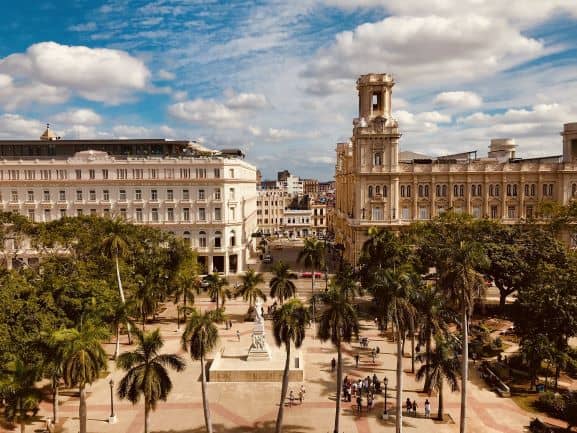
You might run into some small issues when searching for flight tickets to Cuba from the US on various search engines.
Because of ongoing sanctions, some providers will not offer flights to Cuba. Here are some options for booking a flight to Cuba from the US.
You can book directly on the home page of an airline that has flights to Cuba from the US. American Airlines, Southwest Airlines, JetBlue, United, Republic Airways, and Mesa Airlines all fly non-stop to Cuba.
One search engine that offers flight searches to Cuba and will find the best available option for you on time, price, and included services is Skyscanner.
Flying Time To Cuba
The flying time to Cuba from Miami Airport is around one hour.
So you do the math and figure out how long the entire flight will be with the additional flights you have to take before you depart Miami.
From airports in central Europe, like Paris or Amsterdam, the direct flight time to Havana is around 10 hours.
Where to stay in Cuba

There are unlimited options for hotels, resorts, and casa particulares to stay in Cuba.
You will find accommodation in all price ranges, depending on your wallet and preferences, from super cheap to $600 a night!
Generally, it is cheaper in the countryside and small towns than in the cities, but the more pricey high-end resorts are mainly outside the city walls if you want a chill-by-the-pool retreat.
In Varadero and the Cuban Keys (Los Cayos), there is a whole range of all-inclusive and luxurious resort options for parts or the whole of your stay.
If that is not your thing, there are cheaper options both in the hotel range and, not least, through Airbnb and Hostelworld, which are now big in Cuba.
A lot of Cubans all over the country offer a single room in their house, or a whole house, for you to rent.
You can rent anything from a cheap room and breakfast to luxurious multi-bedroom houses and mansions with super facilities for your family or group of friends.
If you are a party traveling together, renting a multi-bedroom house may be both a budget option and offer you better amenities than separate rooms in a hotel.
On the super-cheap end, you can get a hostel bed for down to five dollars a night for a shared room or a private room for 12 dollars a night.
Higher quality hostels/bed and breakfasts or casa`s start from around 15 dollars a night and increase pretty much indefinitely.
High-end hotels are not in apps like hotels.com and booking.com because of the ongoing sanctions, so you might need to go directly to the web page to discover these and make a booking.
Prices In Cuba
Visiting Cuba can be as expensive as you want, but it can also be quite cheap. However, what you think is expensive and cheap probably depends on where you are from in the world.
The absolute cheapest option to stay in Havana is a shared hostel dorm and all cooking at home. This will come in at around 40 dollars a day if you do absolutely nothing that costs money.
A decent hotel or casa with breakfast, lunch, and dinner in restaurants, a few drinks, activities, and taxis will need a daily budget of around 120-150 US dollars.
The History Of Cuba
The story of Cuba is a lot richer and more complicated than the tabloid impressions of the world at large and starts a long time before Fidel Castro’s famous takeover of the island in 1959.
The most world-famous events apart from the revolution are the Bay of Pigs incident and the failed US attempt to invade Cuba in 1961.
Then came the Cuban missile crisis in 1962, when the Soviet Union placed missiles on the eastern part of Cuba, and the US found out and wanted none of it.
No wonder, you might say, as Cuba is only a stone’s throw away from the coast of Miami.
But centuries before that, way back in 1492, Christopher Columbus landed in Cuba for the first time. He “discovered” the island and claimed it for the then-expanding colonial Kingdom of Spain.
That is how Cuba became a Spanish colony for a staggering 300 years, facilitating the slave trade, the sugar trade, the tobacco, and more for the Spanish Empire.
Not until the Spanish–American War of 1898 did Cuba regain its independence with the help of the United States.
Immediately after this war, Cuba was part of the United States Military Government for a while until it gained formal independence in 1902.
However, the independence they regained turned out to be more formal than real, as the US now had interests in the Caribbean island’s strategic location and resources.
The US Platt Amendment was formed, and this made sure that Cuban independence was under supervision from the US for more than half of the 20th century. Up until the revolution was orchestrated by Fidel Castro and friends on New Year’s Eve in 1958.
The Spanish influence in Cuba was suddenly traded for an American one at the beginning of the new century, which continued until New Year’s Eve of 1958.
On New Year’s Eve in 1958, guerilla fighters led by Fidel Castro and Che Guevara overthrew Cuba’s dictator, Fulgencio Batista, in what in the aftermath has been known as The Cuban Revolution.
Fidel And The Revolution
The Spanish influence in Cuba was suddenly traded for an American one in the new century, which continued until New Year’s Eve of 1958.
On that night, guerilla fighters led by Fidel Castro and Che Guevara overthrew Cuba’s dictator, Fulgencio Batista, in what in the aftermath has been known as The Cuban Revolution.
Castro’s almost immediate nationalization of Cuban industries back to Cuban ownership was not received well by the multi-million dollar enterprises in the US running it since the turn of the century.
Castro’s Cuba was almost immediately subject to sanctions from the US in trade and international relations.
Relatively quickly, Castro began developing relations with the Soviet Union instead of the US. Then, on April 16th, 1961, Castro officially announced that his government was socialist.
The next day, April 17th, 1961, the US attempted to invade Cuba to overthrow its new communist-led government. The US failed miserably, as we know, and paid a high price for that.
After this incident, the Communist Party of Cuba was created in 1965 and has ruled the island ever since.
Of course, that is not the full story, it is, of course, a lot more complicated.
I recommend you read about the super complex and interesting history of Cuba before your visit; it explains a lot about how Cuba developed into a society where revolutions could happen.
FAQs Cuba Travel
Why are US citizens not allowed to travel to Cuba?
This is NOT correct. US citizens ARE ALLOWED to travel to Cuba.
Americans can choose a reason for Cuba travel among 12 pre-approved reasons for traveling to Cuba, determined by the US Government.
Can US citizens travel to Cuba as a tourist?
Technically, US citizens are NOT allowed to travel to Cuba as a tourist. Americans choose between 12 pre-approved reasons for Cuba travel, among which the most common one is “to help the Cuban people”.
American citizens still need to buy a tourist card, also called a tourist visa, to enter Cuba.
What are the 12 requirements to travel to Cuba?
You can read about the 12 pre-approved reasons to travel to Cuba for US citizens here.
The easiest and most common reason for Cuba travel is “to help the Cuban people”. There is no paperwork or application process connected to this, you just choose your reason and state that reason if anyone asks.
What happens if a US citizen travels to Cuba?
Nothing happens if a US citizen travels to Cuba, apart from hopefully, the US citizen will have a fabulous holiday and encounter with Cuban culture.
US citizens need to choose one of the pre-approved reasons to travel to Cuba and need to buy the PINK Cuban tourist card, also called a tourist visa.
Selected airlines sell this visa/tourist card, or you can buy one online.
What documents do I need to travel to Cuba?
You need the following documents to travel to Cuba:
- Passport valid for 6 months after the date of entry
- Cuban tourist card / tourist visa
- Proof of travel insurance, including health insurance
- Fill out the d’viajero.cu digital document before your journey
Do Americans need to be vaccinated to enter Cuba?
No, specific vaccines are not required before entering Cuba. Your country’s health department probably has recommendations for what vaccines you should consider.
How Do I get a tourist card for Cuba?
You can buy a tourist card online from Easy Tourist Card, or from the Cuban embassy in your country.
You might also be able to buy a Cuban tourist card from your airline or at the airport prior to departure.
It is possible to buy a Cuban tourist card at Miami International Airport at the check-in counter with American Airlines and Delta Airlines.
How Do I Get A Tourist Visa For Cuba?
A tourist visa is the same as a tourist card for Cuba. You can buy it from the following places:
- Buy one online from Easy Tourist Card
- Buy one from your airline if they offer this
- Buy one at the airport of departure if they offer this
- Buy one from the Cuban Embassy in your country
Is Travel To Cuba Allowed Right Now?
Yes, Cuba travel is allowed right now.
American citizens need to, in addition, choose one of the 12 pre-approved reasons for traveling to Cuba (Americans can not travel as “tourists”) and follow some simple guidelines for traveling in Cuba.
